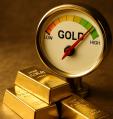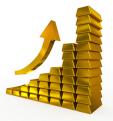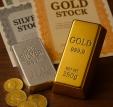Gold is witnessing a regime change as new factors drive bullion price
NEW YORK (June 30) Since the longstanding inverse relationship between gold and real interest rates has broken down, the yellow metal’s price moves are increasingly driven by different forces, according to Joseph Wu, Vice President and Portfolio Manager at RBC Wealth Management.
In a recent analysis, Wu said that correctly identifying gold’s price drivers has always been difficult. “Yet one relationship that has held up reasonably well over the past 25 years is gold’s inverse correlation with real interest rates,” he said.
As gold generates no cash flow while also incurring storage and insurance costs, Wu said it could be argued that gold’s yield is actually negative. “This makes gold sensitive to changes in real (inflation-adjusted) interest rates,” he wrote. “When real rates rise, the opportunity cost of holding gold increases, reducing its appeal relative to income-generating assets. When real rates fall, the reverse is true.”
From the late 1990s until 2021, this dynamic remained relatively stable. “Periods of low or falling real interest rates – proxied by the yield on U.S. 10-year Treasury Inflation-Protected Securities (TIPS) – have typically been conducive to a favourable environment for gold,” Wu said. “Since 2022, however, the pattern has weakened substantially. Despite a sharp rise in real interest rates during 2022 and 2023 – as central banks hiked rates rapidly to rein in post-pandemic inflation – gold prices remained resilient. More recently, gold has rallied further, even as real yields have remained flat.”

Wu suggested that a new regime is emerging, one that has new demand and price drivers.
“Gold, like any asset, is influenced by supply and demand,” he said. “However, the relatively inelastic nature of gold supply – global mine production has grown at just two percent annually since 2010 – tends to put the focus squarely on demand-related variables.”
Gold is viewed as a store of value, a central bank reserve asset, and a portfolio diversifier. “This wide range of roles has long set gold apart, requiring a different analytical framework,” Wu noted. “The forces driving demand often vary depending on the broader macro backdrop.”
With the inverse correlation between gold and real rates breaking down, Wu said the factors determining gold’s trajectory are shifting.
“Understanding who the marginal buyer is – and why they are buying – has become increasingly important,” he said. “In recent years, central banks have emerged as a sizeable, and relatively price-insensitive, source of demand. Their renewed interest stems in part from geopolitical considerations, notably the freezing of Russia’s foreign-currency assets in 2022, which underscored the vulnerability of holding U.S. dollar-based assets as central bank reserves. Since then, central banks – especially in emerging markets – have sought to gradually diversify their reserve assets by building their allocations to gold.”
Wu noted that central banks have purchased over 1,000 net tons of bullion for three consecutive years – double the average between 2010 and 2021, which has helped offset relatively soft demand from investors. “This trend seems likely to persist: a recent survey of 72 monetary authorities conducted by the World Gold Council found that virtually all (95 percent) of the respondents expect ‘official sector’ gold holdings to increase over the next year, suggesting central banks will continue to accumulate bullion in the years ahead,” he wrote.

The two other structural factors that could further support demand under the new regime are portfolio diversification and a store-of-value alternative. “The retreat of U.S. global leadership – evident in the Trump administration’s desire to prioritize domestic issues – has coincided with a more fragmented geopolitical landscape,” Wu said. “A more splintered world marked by more frequent conflict, combined with growing concerns over elevated government debt levels and questions about the long-term role of the U.S. dollar in the international system, could strengthen the case for gold as a diversifier against persistently elevated levels of uncertainty.”
“The fading explanatory power of real interest rates suggests to us that these alternative drivers are now playing a larger role in shaping the gold market,” he added.
Wu said that few financial assets divide investors’ opinions as sharply as gold. “The absence of cash flows makes it difficult to value using conventional methods, leaving the precious metal without a fundamental valuation anchor,” he conceded. “Even so, gold has long drawn support from its role as a hedge against crisis risk and as an alternative to other currencies.”
Gold’s diversification benefits also support its appeal. “It tends to have low correlation with equities, and this characteristic becomes particularly valuable in two scenarios: first, during periods of acute economic or financial market stress; and second, when stocks and bonds move in tandem,” Wu said. “The latter condition – rare over the past two decades – has become more common in the current environment of more volatile inflation.”
Wu believes that the yellow metal should be seen primarily as a long-term investment. “In our view, gold is better suited as a strategic allocation than a tactical one,” he said. “Attempting to time price rallies – or anticipate which global events might trigger them – is inherently difficult. A long-term, strategic approach is more likely to capture gold’s full potential benefits. That means accepting periods of underperformance in exchange for the potential protection and diversification that gold may offer when they are needed most.”
KitcoNews










